Pool preparation
From our experience, the chances of success of a program are higher if it is scheduled in a pool than in the traditional way of dedicated observing blocks. This is due to the flexibility of pooled observations with respect to demand on weather quality and equipment availability. It is therefore advantageous for any project to participate in these pooled observing sessions. Participation is of additional interest for low rated proposals which may otherwise not be scheduled. Astronomers with little or no experience are welcome as observers at the IRAM 30m radiotelescope.
Contents
Scripts preparation
Pooled observations should be fairly simple and straightforward to observe. Note that your project will NOT be observed in case you do not send your observing instructions to the GISMO & NIKA Pool Manager before the begin of the pool. It is highly recommended to use the standard scripts provided by the IRAM staff:
You can download these example scripts and adapt them to your project. If you have questions please contact the pool manager.
Pointing Sources
It is possible to select pointing sources nearby to your science targets using XEphem and the IRAM 30m Catalog for Continuum Cameras.
Observing modes
We offer two standard observing modes where data are taken continuously while the telescope follows either Lissajous curves, or zig-zag patterns. Neither mode makes use of the secondary mirror to modulate the signal. Lissajous patterns are very efficient for point source observations as the target stays on-array during the scans (amplitude ~1 arcmin). We have noticed however that the strong telescope accelerations generated by the Lissajous scanning pattern produce some systematic noise at medium-to-large spatial scales (>20") in the reconstructed maps. While we are investigating the possibility to mitigate this extra noise (hardware and/or software), we currently consider the Lissajous observing mode not suitable for mapping extended emission. Instead the traditional zig-zag scanning pattern should be used for mapping extended emission or covering large areas.
Lissajous mode
Lissajous maps are square shaped and the coordinate system is always horizontal. Therefore, the only parameter needed is the amplitude of the Lissajous pattern.
PAKO> @ cont_lissajous Size
For example, for a 1'x1' Lissajous map, type:
PAKO> @ cont_lissajous 1
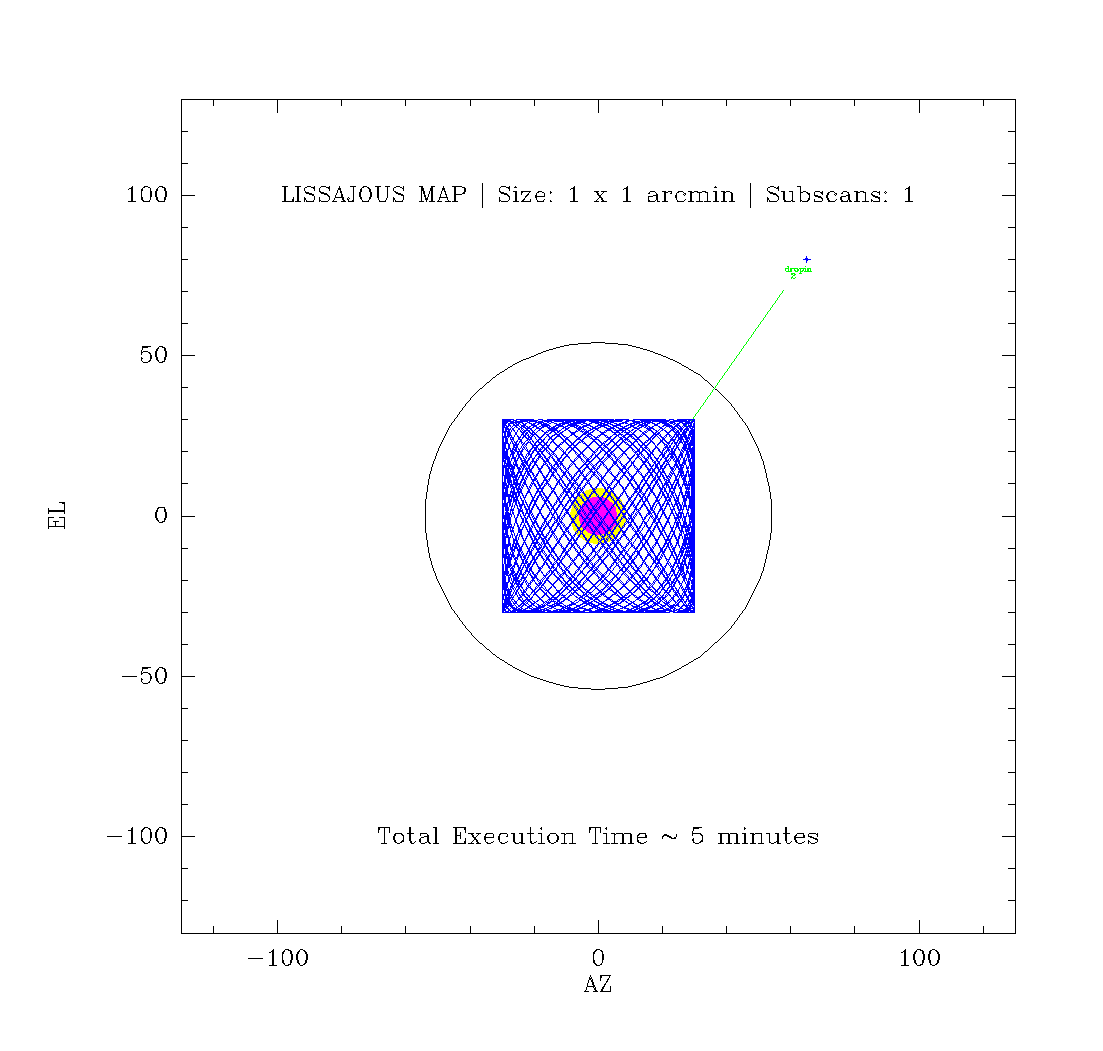
On-the-fly mode
We provide the observers with a very flexible on-the-fly (otf) mode, that can be commanded as follows:
PAKO> @ cont_onthefly xSize ySize posAngle tiltAngle System [ScanSpeed]
where xSize and ySize are the size of the otf map in arcminutes, posAngle determines the angle of the scanning direction (anti-clockwise), tiltAngle determines the inclination of the scanning direction (anti-clockwise, useful to map filaments), System set the reference coordinate system (radec or azel), and ScanSpeed (optional) is used to fix the scanning speed (in arcseconds/sec, default is 40). The cont_onthefly command allow to generate plenty of different scanning patterns. In the following, we show some examples.
PAKO> @ cont_onthefly 4 4 0 0 azel
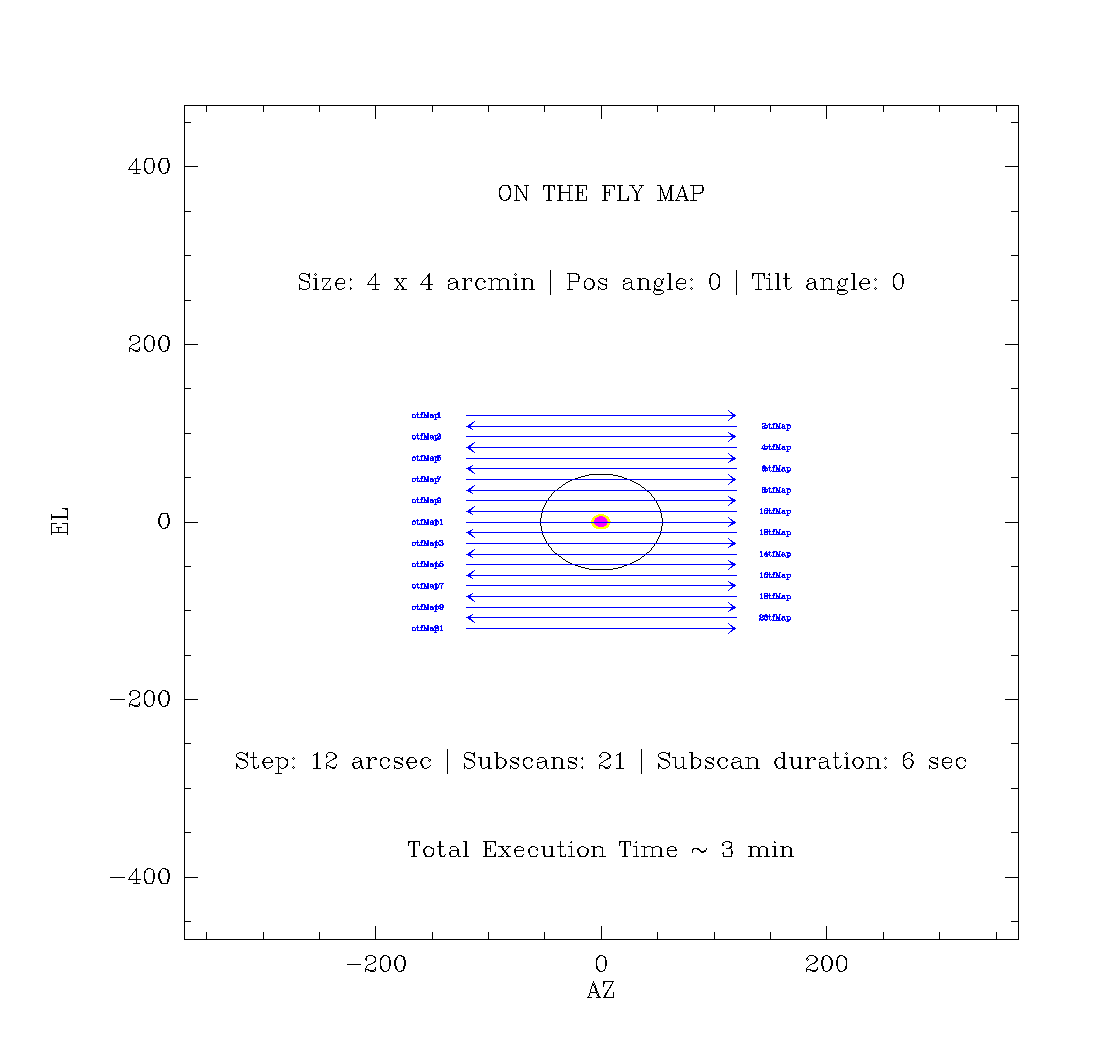
PAKO> @ cont_onthefly 8 8 45 0 azel
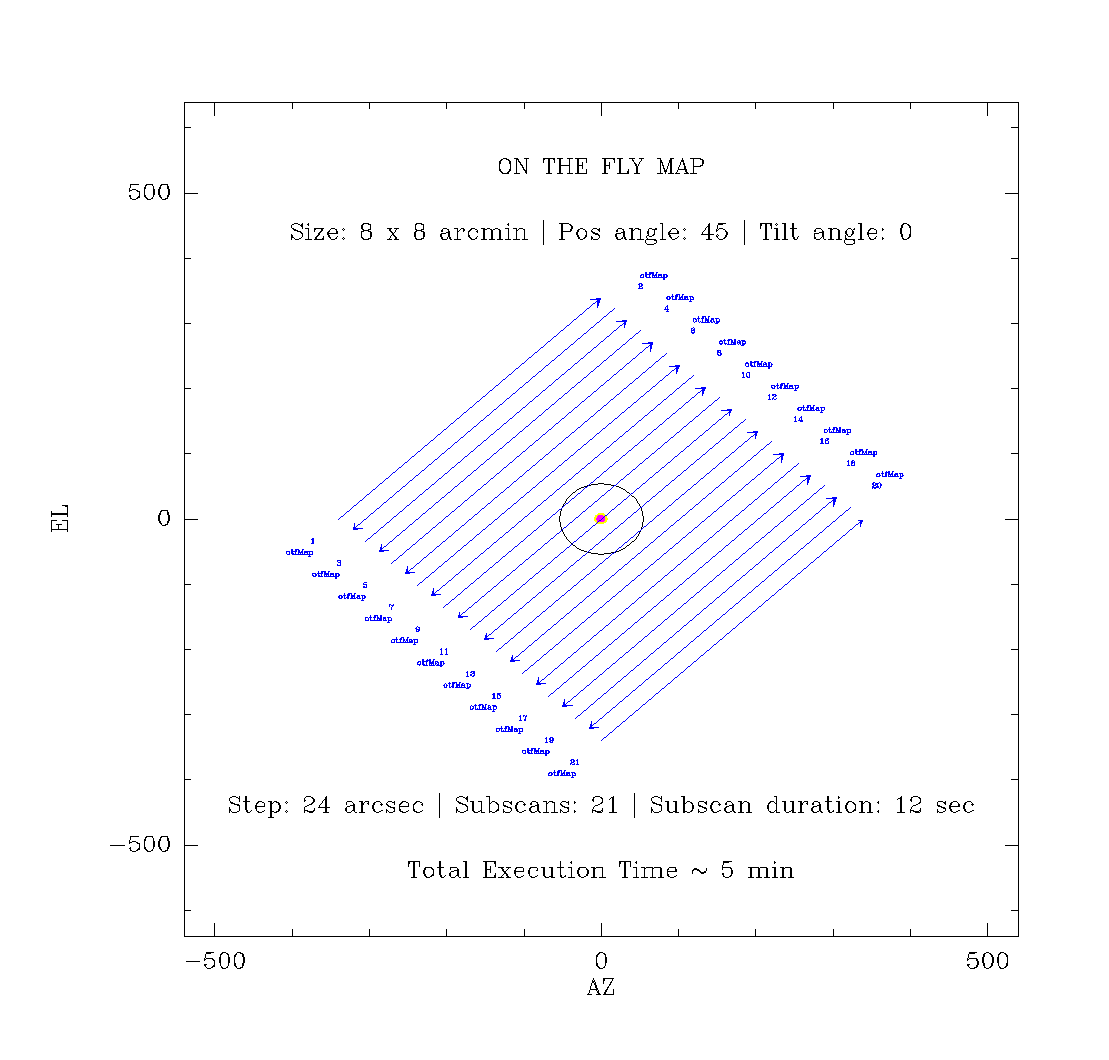
PAKO> @ cont_onthefly 4 12 30 +30 radec PAKO> @ cont_onthefly 4 12 30 -30 radec
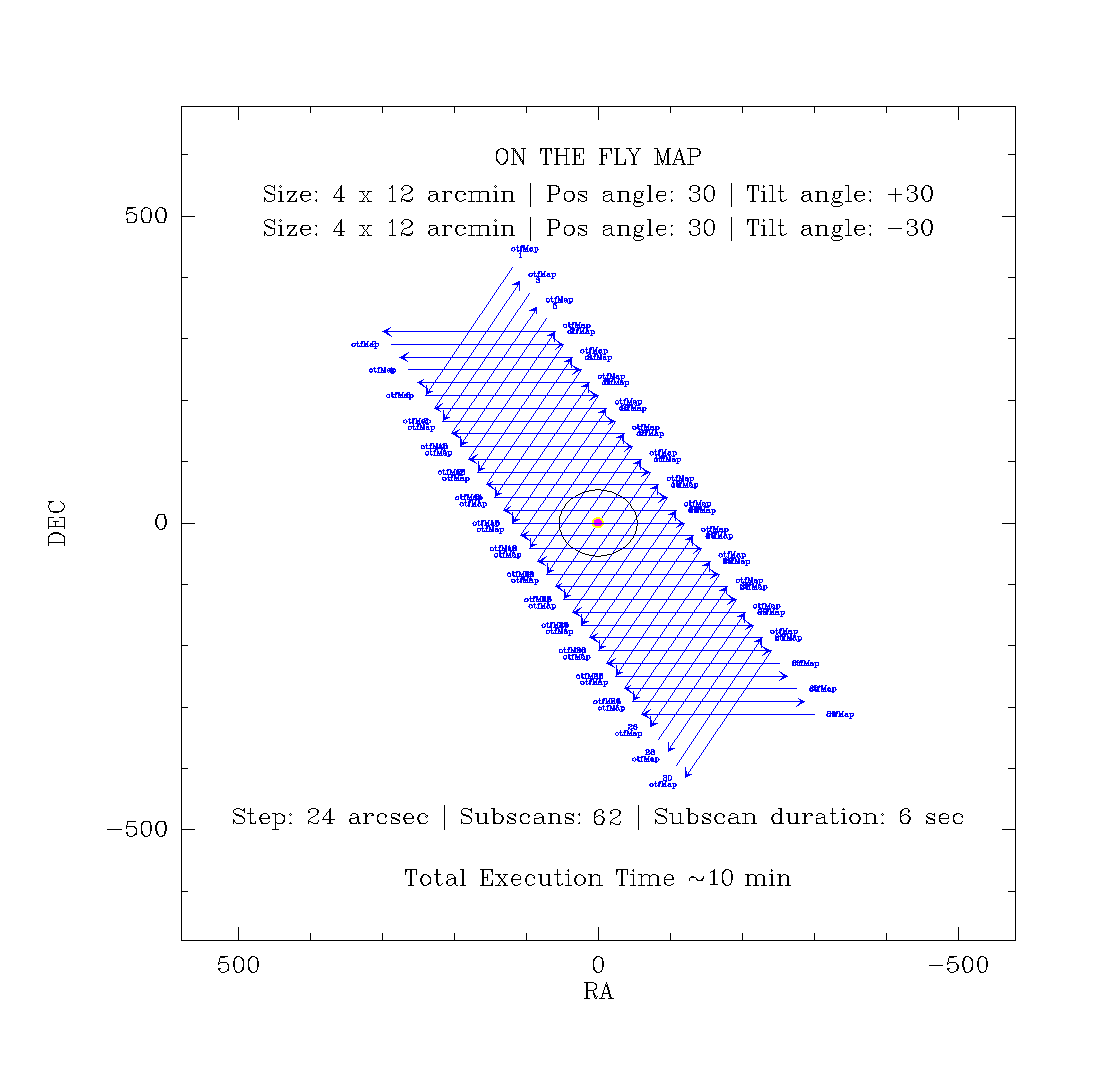
PAKO> @ cont_onthefly 12 0 65 0 radec
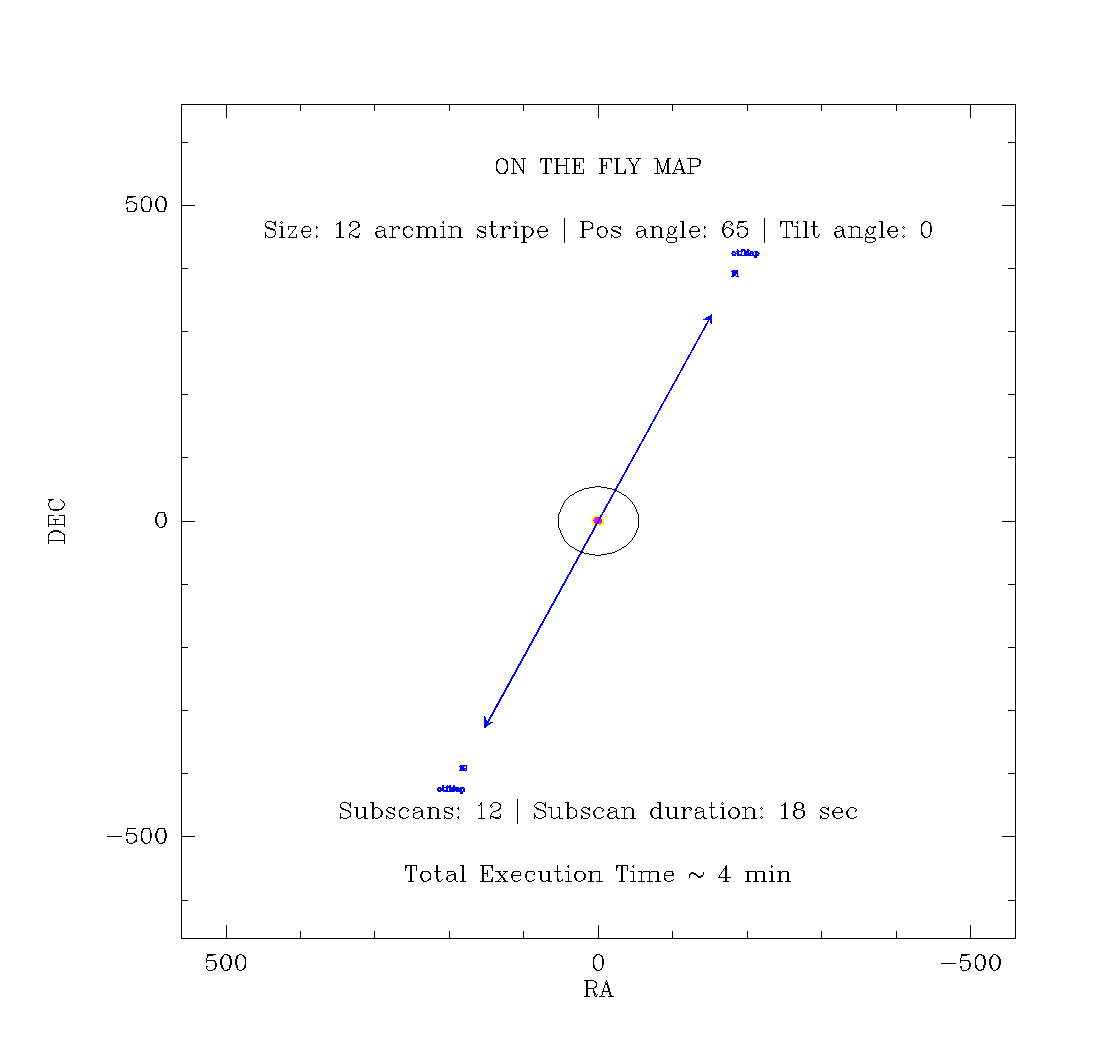
Author: Israel Hermelo (GISMO &NIKA Pool Manager)
email: hermelo@iram.es
Created: 2013.OCT.25
Last update: 2015.JAN.24
